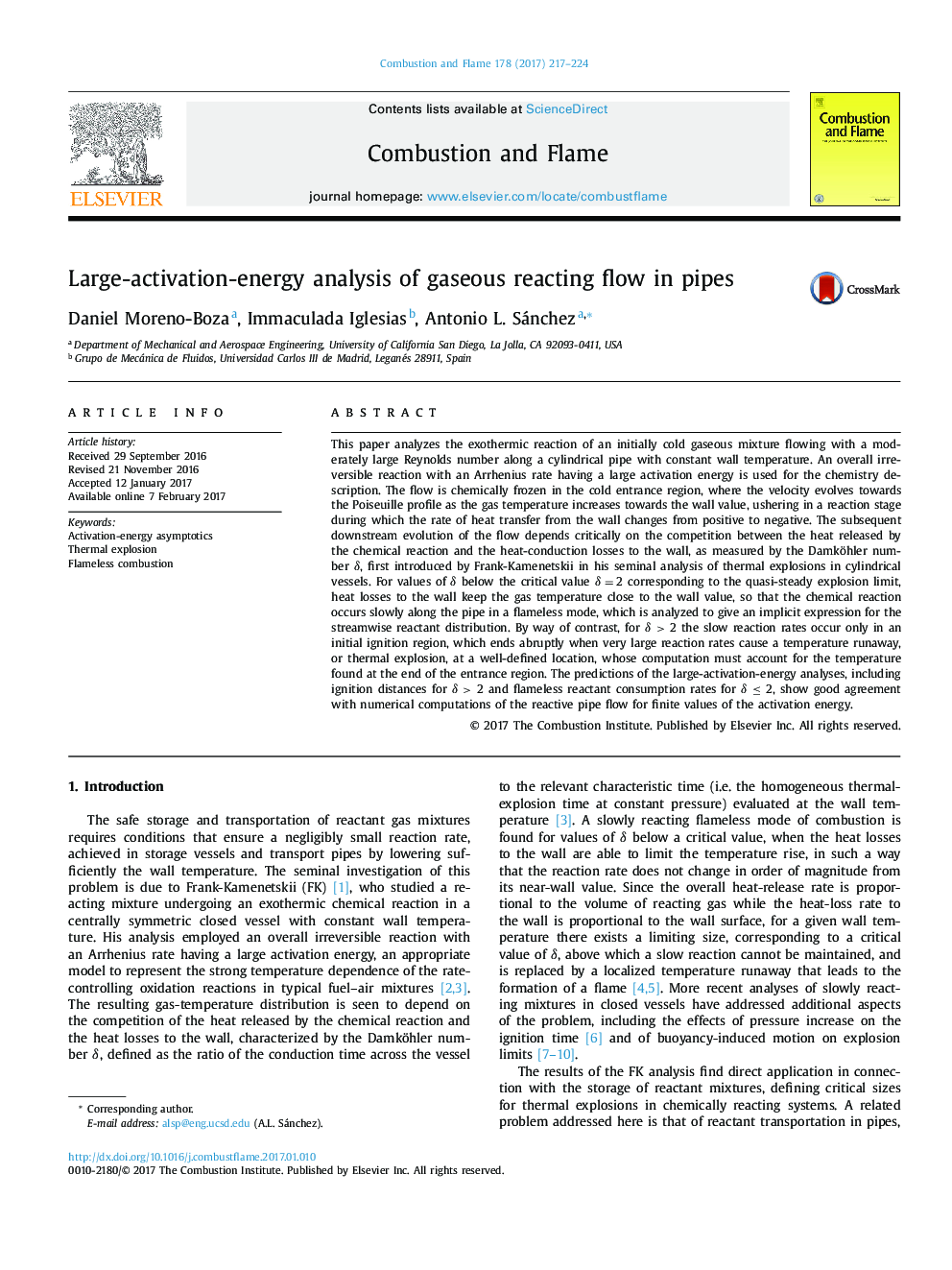| Article ID | Journal | Published Year | Pages | File Type |
|---|---|---|---|---|
| 6468590 | Combustion and Flame | 2017 | 8 Pages |
This paper analyzes the exothermic reaction of an initially cold gaseous mixture flowing with a moderately large Reynolds number along a cylindrical pipe with constant wall temperature. An overall irreversible reaction with an Arrhenius rate having a large activation energy is used for the chemistry description. The flow is chemically frozen in the cold entrance region, where the velocity evolves towards the Poiseuille profile as the gas temperature increases towards the wall value, ushering in a reaction stage during which the rate of heat transfer from the wall changes from positive to negative. The subsequent downstream evolution of the flow depends critically on the competition between the heat released by the chemical reaction and the heat-conduction losses to the wall, as measured by the Damköhler number δ, first introduced by Frank-Kamenetskii in his seminal analysis of thermal explosions in cylindrical vessels. For values of δ below the critical value δ=2 corresponding to the quasi-steady explosion limit, heat losses to the wall keep the gas temperature close to the wall value, so that the chemical reaction occurs slowly along the pipe in a flameless mode, which is analyzed to give an implicit expression for the streamwise reactant distribution. By way of contrast, for δ > 2 the slow reaction rates occur only in an initial ignition region, which ends abruptly when very large reaction rates cause a temperature runaway, or thermal explosion, at a well-defined location, whose computation must account for the temperature found at the end of the entrance region. The predictions of the large-activation-energy analyses, including ignition distances for δ > 2 and flameless reactant consumption rates for δ ⤠2, show good agreement with numerical computations of the reactive pipe flow for finite values of the activation energy.
